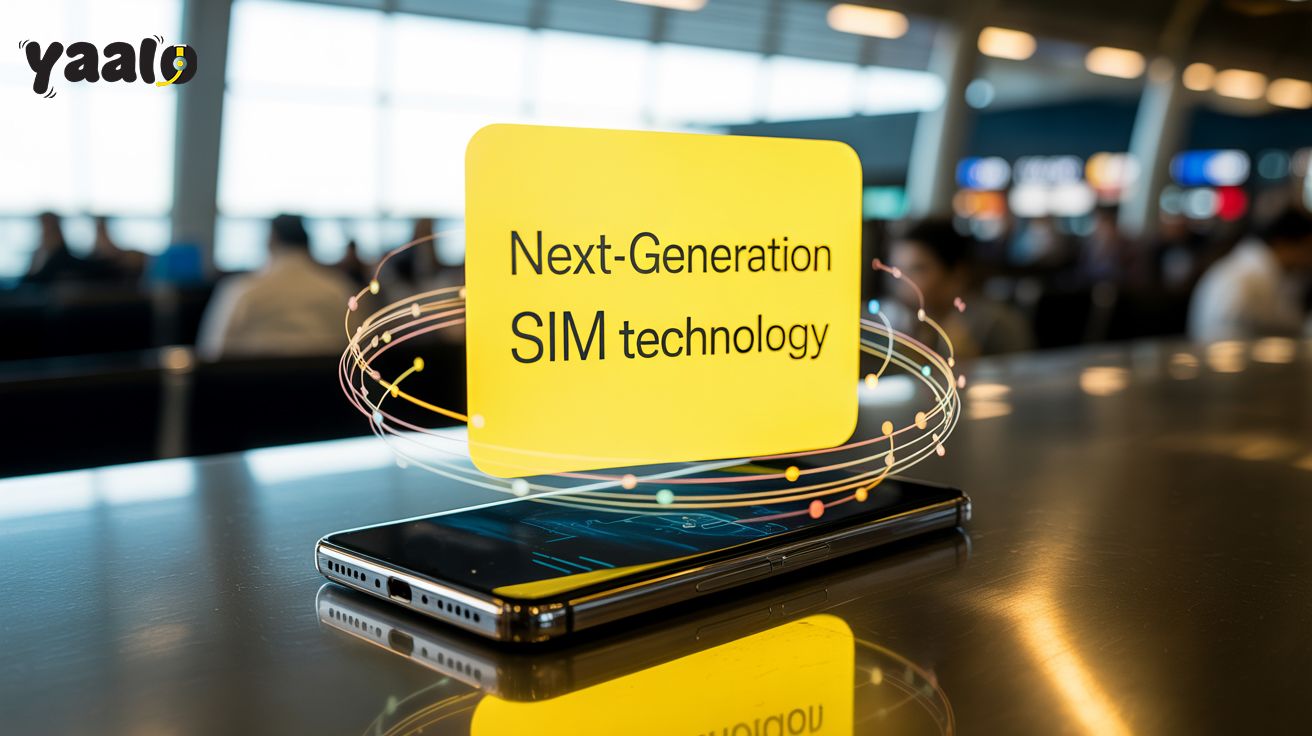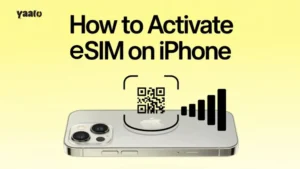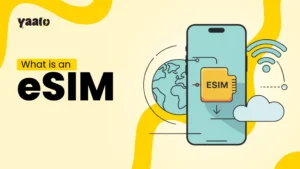Development in the telecommunication industry replacing physical SIM cards with next-generation SIM such as eSIM and iSIM. According to experts, eSIM card users reach around 5 billion by 2030. Why is next-generation SIM technology dominating day by day? The key reason is convenience. eSIM and iSIM are the virtual SIM cards that are directly integrated into the device. Compared to an eSIM card, iSIM is not very popular. These SIMs ensure a strong internet connection without roaming charges.
In this article, I will go through the details of how SIM cards have evolved and how the next generation is becoming the future of hassle-free communication.

Evolution of Physical SIM to iSIM Technology
The first SIM card was invented in 1991, which made our device capable of connecting with the other network. It was a big achievement that human beings living miles away can communicate with each other. Then, a big change came in the telecommunication industry after years; the devices became smart, and SIM cards evolved into virtual SIMs.
Nowadays, we use devices that are compatible with next-generation SIM technology. The physical chip card that we inserted in our devices years ago now comes into the market directly integrated into the devices by the manufacturers. This evolution positively affects our lives and improves the way to communicate worldwide. Here is the sketch of how the bulky SIM cards evolved to next-generation SIM technology.
- Full-Sized SIM: A Subscriber Identity Module of a credit card size was introduced in 1991.
- Mini-SIM: Mini-SIM is a smaller version of the full-sized SIM invented in 1996.
- Micro-SIM: The size of the SIM was minimized to micro-SIM and nano-SIM in 2010 and 2012.
- Next Generation SIM: eSIM and iSIM are the latest next-generation SIM cards that are directly integrated into the device.
Key Featurters of eSIM and iSIM
eSIM is a tiny chip card that is attached to the compatible device hardware. It is the premium solution to access instant connectivity without breaking the bank. Similarly, integrated SIM or iSIM is installed into the device’s processor. Like an embedded SIM, iSIM ensures to provide easy cellular coverage. Both SIMs are specialized to provide flexible and convenient data connection. The key features of eSIM and iSIM include.
| Features | eSIM | iSIM |
| Integration | Embedded into the device’s hardware | Integrated into the device processor |
| Cost | Cost-effective | Expansive |
| Activation | Remote activation | Remote activation |
| Purpose | Offer fast cellular network coverage | Extensive network coverage |
| Specialized for | Smartphones and travel gadgets | IoT devices |
| Adaptation | Compatible for wireless devices | Limited to IoT devices |
Why is next-generation SIM technology dominating?
Next-generation SIM technology is dominating and taking over the place of physical SIM cards. It become a convenient means of communication because it offers ease and is comparatively lower cost than the local SIM cards and pocket WiFi. Some reasons why it is becoming popular include.
Enhanced Security
Compared to the traditional SIM cards, eSIM and iSIM offer enhanced security. The SIMs don’t have any chance of being stolen or damaged. Users’ information is digitally stored in virtual SIM cards. Thus, it has a lower chance of hacking or SIM swap attacks.
Cost-Effectiveness
eSIM card is a cost-effective solution to access connectivity. It provides stable network coverage while traveling. eSIM is a travel-friendly SIM that allows users to access roaming free internet for streaming, scrolling, and searching for maps. iSIM is more expensive than eSIM but is also specialized to provide a stable connection.
Adaptation Due to Convenience
Convenience matters a lot in this digital age. People are adopting next-generation technology because it eliminates the hassle of physical SIM cards. An eSIM in the device allows users to access multiple networks at a time. You can switch between these networks without physical swapping. Device manufacturers and users are adopting this technology to make worldwide communication easy.
Next-Gen SIM Compatible Devices
Like physical SIM cards, not all the devices in the market support eSIM technology. However, due to increased demand for an eSIM, the device manufacturers are integrating it into their devices. iSIM is a software-based SIM that is specialized for IoT devices. The smartphone brands that support eSIM technology include.
- iPhones 11 Pro, 12, 14 Pro, 15 Pro, 16.
- Samsung Galaxy. Huawei, Oppo, Sony, and Google Pixel devices.
- Smartwatches, including Apple and Samsung Watches.
Drawback of Next SIM Technology
eSIM and iSIM technologies offer better flexibility and convenience. However, their key limitation is device compatibility. Like every smart device has a physical SIM slot, but not all devices have embedded SIM. Only the latest models of smartphones are compatible with eSIM technology. Thus, you can’t use eSIM on every device. How can you confirm whether your device supports eSIM or not? You can confirm it from your device settings or check your carrier’s official site.
Conclusion
eSIM and iSIM are the latest technologies that offer effortless connectivity worldwide. It is taking up the physical SIM card via improved security and straightforward premium activation. In the next few years next generation SIM technology will be used on our devices like the physical SIM cards. It has the potential to revolutionize the IoT factories.
FAQs
Will eSIM work on my current smartphone?
If you have the latest smartphone model, it may support eSIM technology. You can also confirm it from your device settings.
Is next-generation technology SIM more secure than traditional SIMs?
A next-generation SIM card is more secure than a physical SIM card. The risk of SIM card cloning and fraud is much lower.
- What is eSIM, and How Does it Work? - October 7, 2025
- Is eSIM Safe for Banking? Guide for Secure Mobile Banking! - October 1, 2025
- eSIM Compatible Laptops: Ultimate Guide and List for 2025! - September 30, 2025







